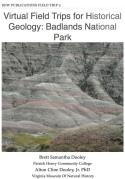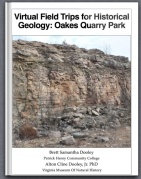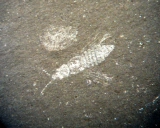 Today marked the first full day of the Southeastern GSA meeting.I was in the first poster session, presenting the research that I’ve been doing with Nancy Moncrief on prophyria in eastern fox squirrels.
Today marked the first full day of the Southeastern GSA meeting.I was in the first poster session, presenting the research that I’ve been doing with Nancy Moncrief on prophyria in eastern fox squirrels.
At Tim’s request, immediately after setting up my poster we went to the engineering geology session to hear Gregg Davidson speak on micro-sinkhole development in Mississippi. These apparently formed due to an increased rate of tree stump decomposition when the water table was lowered by pumping at a nearby water bottling plant. They were even able to tie water table fluctuations directly to the times of day when the pumps were turned on at the plant.
Predictably, there were a bunch of talks on the 2011 Virginia earthquake, but I was unfortunately not able to attend many of them, although Brett went to most of them. Instead I returned to the poster session, and between periods of answering squirrel questions I tried to look at some of the other paleontology posters. Jordan Carney, Leanne Hancock, and Steven Holland presented preliminary efforts on developing a key to identify Ordovician bryozoans (such as Parvohallopora, top), which are often difficult to distinguish from one another without sectioning them.
Christine Solon, Rowan Lockwood, Gene Hunt, and T. Markham Puckett tested a hypothesis that a large degree of sexual dimorphism can increase the likelihood of extinction, by looking at Cretaceous ostracodes (the example below is from the Eocene). Their initial results show little evidence of a correlation between dimorphism and species longevity.
Other than the modern nautilus, coiled cephalopods are usually thought of as a Paleozoic or Mesozoic phenomenon. Obviously, since the nautilus is extant, they must be present in the Cenozoic as well, and they are known in small numbers from deposits all over the world (such as the Eocene Hercoglossa, below, from the Texas Memorial Museum). Roger Portell and Alex Kittle reported several Eocene-Oligocene cephalopods from Florida.
Samantha Stanford and Patricia Kelley looked at the relationship between the ornamentation on mollusk shells and their likelihood of being attacked by naticid gastropods, which drill holes in their prey’s shells (such as the holes below in a specimen of Chesapecten). At least for Miocene shells from the St. Marys Formation, there appears to be no strong correlation between ornamentation and drilling.
After the morning poster session we had lunch with Heyo Van Iten of Hanover College. Heyo was the professor for my very first paleontology class as an undergraduate, 21 years ago. After lunch we stopped by Heyo’s poster on Ordovician conulariids from Scotland. Conularids are small, conical Paleozoic fossils thought to be related to the jellyfish (example below from the Ordovician of Iowa).
Cindy Liutkus, Jim Beard, Daniel Deocampo, Andy Heckert, Nick Fraser, and Paul Ragland presented a summary of research published last year on the deposition of the insect bed at the Solite Quarry. Traditional models hold that the exquisite preservation in the insect bed occurs because is was in the deepest, anoxic part of a rift lake. Liutkus et al. disagree, and suggest that the geochemistry of the deposit indicates that the insect bed is actually in the shallowest part of the lake, a few centimeters deep at most, with the excellent preservation due to a toxic environment.
The conference continues tomorrow, with lots of paleontology talks.













